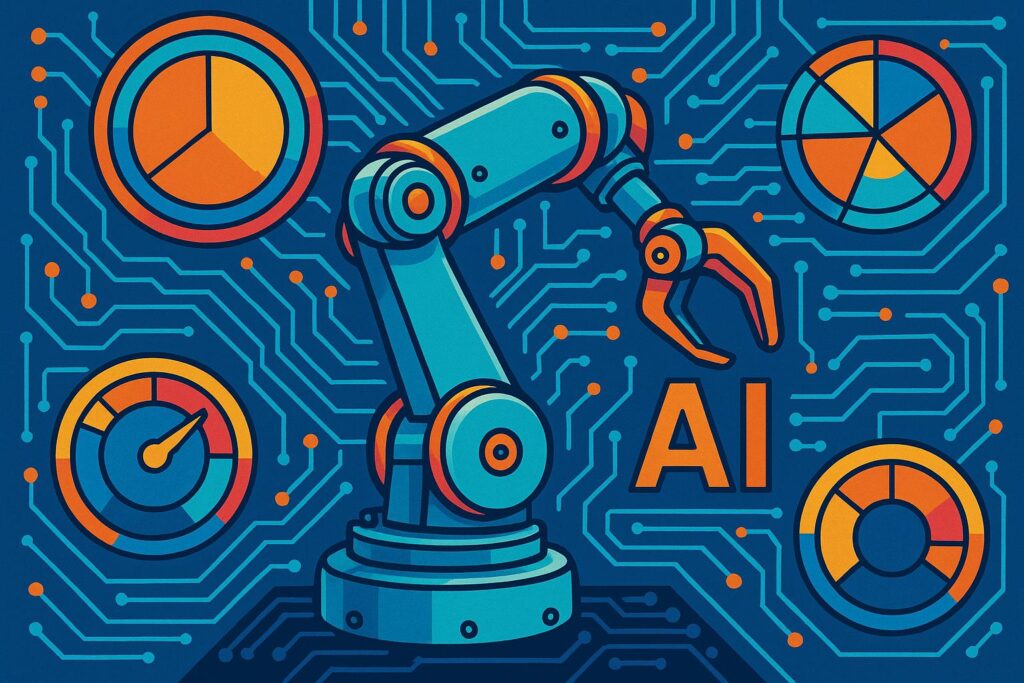Listen to the article
The integration of advanced artificial intelligence with workflow platforms is transforming enterprise operations, enabling smarter automation, enhanced decision-making, and unprecedented agility across industries.
Over the past several decades, enterprises have continuously sought to integrate and optimise their business processes through a variety of workflow tools. These solutions have historically been described under various banners such as “business intelligence,” “business process management” (BPM), or “robotic process automation” (RPA). Regardless of the terminology, the core aim has been consistent: to create centralised systems that collect data across an organisation, analyse it, and generate actionable reports, thereby linking multiple operational systems into a cohesive workflow.
Artificial intelligence (AI) has long been intertwined with these efforts. Early RPA solutions, for example, employed basic optical character recognition (OCR) technologies to facilitate document ingestion — a rudimentary application that was often marketed as AI. Additionally, simple decision-making capabilities based on collected data were branded as intelligent automation. However, this early-stage AI was limited in scope and sophistication.
Today, the integration of AI with business workflow tools is evolving rapidly, entering what some describe as a new frontier where traditional API-driven orchestration is combined with advanced large language models (LLMs) and machine learning capabilities. This fusion enables far more intelligent and responsive workflows than were previously possible, providing businesses with deeper insights and automation that can adapt and improve over time.
Several contemporary platforms highlight this new wave of AI-enhanced workflow tools. IBM’s Blueworks Live is a cloud-based BPM tool adhering to the BPMN 2.0 standard that facilitates collaborative discovery, documentation, and analysis of business processes. It is designed to be user-friendly and accessible through web browsers, supporting real-time collaboration without requiring specialised infrastructure—making it suitable for industries aiming to boost process efficiency and maintain regulatory compliance.
Another notable solution is Flowable, an open-source workflow engine written in Java that executes BPMN 2.0 processes. Flowable offers modular engines supporting BPMN, CMMN (case management), and DMN (decision models), alongside a cloud-based graphical interface, Flowable Design, for easy authoring of process models. Its open-source nature and scalability options make it attractive to organisations requiring customizable and flexible BPM solutions.
Pyrus stands out as a cloud-based workflow automation system designed for ease of use. It provides a web interface for setting up and managing workflows and tasks without the need for coding or IT intervention. Pyrus supports multi-channel client request processing and includes collaboration features intended to improve productivity across various business functions, all accessible from any device.
The ADONIS BPM suite from BOC Group offers a comprehensive solution for documenting and optimising business processes. It complies fully with BPMN 2.0 and incorporates international standards such as BPMM, DMN, and ISO 9000. As an HTML5 web-based tool, ADONIS helps organisations visualise process flows and standard operating procedures, providing valuable insights to enhance operational efficiency and compliance.
On the automation and integration front, Workato represents an enterprise-grade platform that connects applications, data, and workflows across cloud and on-premises environments. Its Model Context Protocol (MCP) platform facilitates the deployment of AI agents capable of performing context-aware, multi-step tasks within enterprise systems. This allows businesses to tailor AI-driven workflows to specific outcomes, driving productivity and operational excellence across departments.
In the realm of customer experience and marketing, Adobe Experience Platform leverages AI extensively. It features a suite of pre-built AI agents that assist with audience targeting, journey design, experimentation, data forecasting, site optimisation, and product support automation. The platform’s AI Assistant interface is actively used by over 70% of users, highlighting the growing adoption of AI-powered tools to enhance marketing effectiveness and customer engagement.
As these examples illustrate, AI-infused workflow tools are transitioning from basic automation to sophisticated platforms that integrate advanced AI models, enabling businesses to achieve smarter process orchestration, improved decision-making, and greater operational agility. The convergence of AI with BPM and automation heralds a new era of business process management, where intelligence is embedded into every step of the workflow, delivering measurable improvements in efficiency and strategic insight.
📌 Reference Map:
- Paragraph 1 – [1] (CIO)
- Paragraph 2 – [1] (CIO)
- Paragraph 3 – [2] (IBM Blueworks Live), [3] (Flowable)
- Paragraph 4 – [4] (Pyrus), [5] (ADONIS)
- Paragraph 5 – [6] (Workato)
- Paragraph 6 – [7] (Adobe Experience Platform)
- Paragraph 7 – [1] (CIO), [6] (Workato), [7] (Adobe Experience Platform)
Source: Fuse Wire Services


